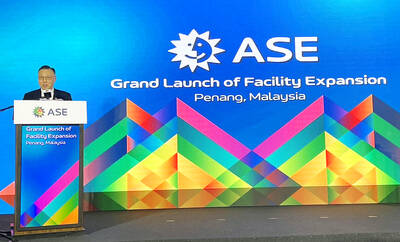Starting from yesterday, around 50 percent of Taipei City's population was covered by wireless Internet connections, and the figure will go up to 90 percent by June next year, the city government said.
The city's wireless infrastructure, or Wifly, made its official debut yesterday after trials started in September last year. It is part of the government's "M-City" (mobile city) project that aims to turn the city into a wireless haven.
With the wireless connection, residents can easily access the Web via their laptops or personal digital assistants, even saving call charges if they have phones equipped with Skype, an Internet-phone software.
It was earlier reported that the target date for 90 percent coverage was early next year.
"There are some technical glitches to overcome, such as a number of wireless signal disturbances in the public area, which delayed the progress of the project," said Oliver Yang (
He said that the company is working toward meeting the 90-percent coverage goal next year.
The recently completed second phase covers 28.2km2 of the city, with wireless connection extended to major business areas, including the Xinyi, Ximending and Dunhua districts, as well as underground malls connected to mass rapid transit (MRT) stations.
The first phase was completed in January this year, covering 30 MRT stations and 150m of their surrounding neighborhoods. The coverage was 20 percent of the city's population at that time.
Starting next month, Wifly users will need to pay a fee.
The proposed fees, which are pending approval from the city government, include a subscription rate of NT$399 per month, or prepaid rates of NT$500 per month and NT$100 per day, according to Q-ware.
As the contractor is looking for other business models to increase revenues, it doesn't rule out the possibility of lowering subscription fees in the future to attract a larger user base, Yang said.
"As Wifly now has around 60,000 active members for the free trial period, we need to see if the new payment model will work out," he said.
For more information, go to www.wifly.com.tw.

Taiwan Semiconductor Manufacturing Co (TSMC, 台積電) yesterday said that its investment plan in Arizona is going according to schedule, following a local media report claiming that the company is planning to break ground on its third wafer fab in the US in June. In a statement, TSMC said it does not comment on market speculation, but that its investments in Arizona are proceeding well. TSMC is investing more than US$65 billion in Arizona to build three advanced wafer fabs. The first one has started production using the 4-nanometer (nm) process, while the second one would start mass production using the

When an apartment comes up for rent in Germany’s big cities, hundreds of prospective tenants often queue down the street to view it, but the acute shortage of affordable housing is getting scant attention ahead of today’s snap general election. “Housing is one of the main problems for people, but nobody talks about it, nobody takes it seriously,” said Andreas Ibel, president of Build Europe, an association representing housing developers. Migration and the sluggish economy top the list of voters’ concerns, but analysts say housing policy fails to break through as returns on investment take time to register, making the

‘SILVER LINING’: Although the news caused TSMC to fall on the local market, an analyst said that as tariffs are not set to go into effect until April, there is still time for negotiations US President Donald Trump on Tuesday said that he would likely impose tariffs on semiconductor, automobile and pharmaceutical imports of about 25 percent, with an announcement coming as soon as April 2 in a move that would represent a dramatic widening of the US leader’s trade war. “I probably will tell you that on April 2, but it’ll be in the neighborhood of 25 percent,” Trump told reporters at his Mar-a-Lago club when asked about his plan for auto tariffs. Asked about similar levies on pharmaceutical drugs and semiconductors, the president said that “it’ll be 25 percent and higher, and it’ll

CHIP BOOM: Revenue for the semiconductor industry is set to reach US$1 trillion by 2032, opening up opportunities for the chip pacakging and testing company, it said ASE Technology Holding Co (日月光投控), the world’s largest provider of outsourced semiconductor assembly and test (OSAT) services, yesterday launched a new advanced manufacturing facility in Penang, Malaysia, aiming to meet growing demand for emerging technologies such as generative artificial intelligence (AI) applications. The US$300 million facility is a critical step in expanding ASE’s global footprint, offering an alternative for customers from the US, Europe, Japan, South Korea and China to assemble and test chips outside of Taiwan amid efforts to diversify supply chains. The plant, the company’s fifth in Malaysia, is part of a strategic expansion plan that would more than triple